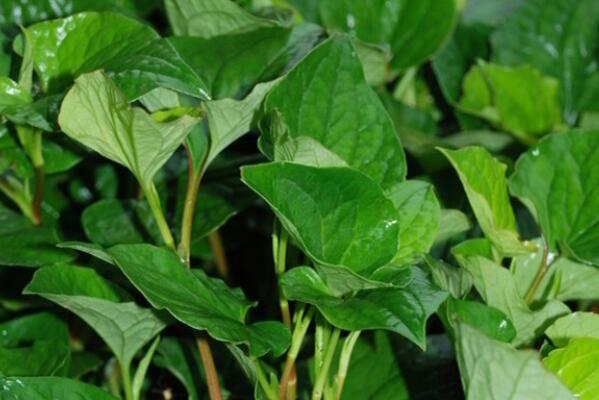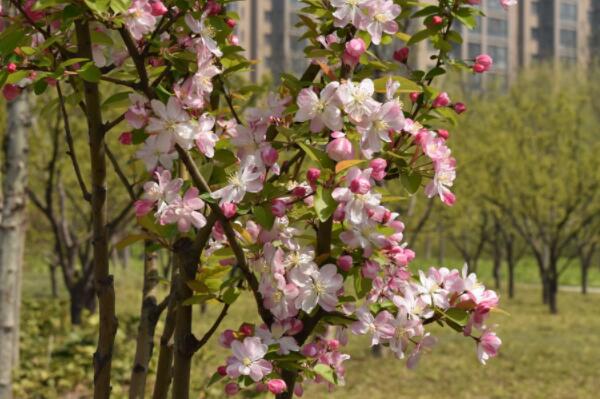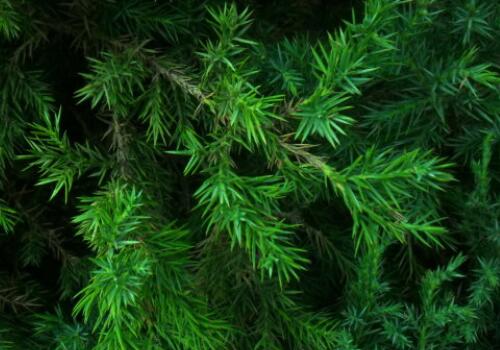Planting experience: what are the high-yield artificial cultivation techniques of Houttuynia cordata Thunb? Attached efficacy and function
Houttuynia cordata, also known as dog heart grass, folded ear root dog point ear, Xin, slightly cold, slightly bitter. In summer, stems, leaves, luxuriant flowers and spikes are harvested for a long time to remove impurities and dry in the sun. So what are the high-yield cultivation techniques of Houttuynia cordata Thunb? What is the efficacy and effect?

What are the high-yield artificial cultivation techniques of Houttuynia cordata Thunb?
I. Plant characteristics and biological characteristics
Houttuynia cordata plant 15-30 cm tall, underground stem creeping growth, white. The upper part of the stem is erect, base obliquely, purplish red, glabrous. Leaves alternate, cordate, 3-8 cm long and 4-6 cm wide, apex acute, entire, purplish above when old, purplish red below, both surfaces glabrous except veins; petiole 1-3 cm long, often sparsely hairy; stipules membranous, lanceolate, base connected with petiole to form a sheath. Spikes arising from the upper end of the stem opposite leaves, 1-3 cm long, 4 white petal-shaped involucre at the base, 1-2 cm long, flowers small and dense, bisexual, without perianth, bracts linear; 3 stamens, filaments slender, pistil composed of 3 lower connate carpels, superior ovary, style separated. Capsule pot-shaped, neck tip dehiscent. Seeds ovoid, striate. The florescence is from April to July and the fruiting period is from June to September.
Yufishi grassland grows in low wet depressions, ditches and field ridges with high requirements for water, sufficient water supply is required during the whole growing period to keep the soil moist; it grows better in warm and humid environment, is afraid of frost, and the underground stem is more hardy, it can survive the winter below-15 ℃, 12 ℃ begins to germinate, and the suitable temperature for growth is 16-25 ℃; it is better to have lax requirements on soil and light, and the soil rich in organic matter is better.
II. Land selection, land preparation and application of base fertilizer
(1) selection of plots. In order to obtain higher rhizome yield, the land should be planted in sandy loam with flat, sufficient water source, convenient drainage and irrigation, deep plough layer, suitable soil structure, good physical and chemical properties and moderate fertility.
(2) fine land preparation. After selecting the plot, thoroughly remove weeds and the former orange pole, deep ploughing and sun-drying. Before planting, deep ploughing and raking, apply sufficient basic fertilizer, so that the land is loose, fertile and flat.
(3) apply sufficient base fertilizer. Before planting, 1000-1500 kg of rotten farm manure and 150,200kg of plant ash are applied per mu, ploughing once, with a depth of 25-30cm, so that the fertilizer is fully mixed with the soil.
(4) the soil moisture is opened and planted, and after the soil is fully mixed with fertilizer, the soil moisture is 2-2.5 meters wide, the ditch is 30-35 cm wide and 25-30 cm deep.
III. Mode of reproduction
Houttuynia cordata Thunb generally uses asexual propagation, rhizome propagation and cutting propagation, but the effect of rhizome propagation is better, save time and labor, and the yield is higher.
Rhizome propagation. It can be sown all the year round, but it can be harvested when sowing in winter, spring and early summer. generally, the best time for sowing is about the Beginning of Spring. Before the plant germinates new seedlings, the rhizome is dug out and cut into small segments 8-10 cm long with more than 2-3 axillary buds. And leave whisker roots. According to the row spacing of 20-25 cm, open a shallow trench with a depth of 5-8 cm, discharge the cut rhizome in the ditch according to 8-10 cm plant spacing, cover the soil 6-10 cm, the soil is moist without watering, irrigate the soil properly when the soil is dry, keep the soil moist, and the seedlings can grow after 15-20 days.
IV. Field management
(1) weeding by ploughing. After houttuynia cordata is planted, weeds must be removed frequently, soil can be cultivated and weeds can be removed before closure, and weeds can be pulled manually after closure, combined with mid-tillage and weeding to do a good job of fertilizer and water management.
(2) Water and fertilizer management. Keep the soil moist throughout the growth period. The growth was slow in the early stage, and before the seedlings survived, 8-10 kg urea per mu was applied as seedling fertilizer, and a large amount of fertilizer was needed in the peak period of stem and leaf growth, with 10-15 kg compound fertilizer per mu. After that, it was changed to extra-root topdressing, and 0.4% potassium dihydrogen phosphate solution was sprayed every 7 days for a total of 4-5 times. When the plant height is more than 10 cm, cultivate the soil in time, do not irrigate the polluted dirty water during the whole growth period, prohibit the application of garbage, unfermented manure and urine, nitrate nitrogen (ammonium nitrate), etc., and do not apply any fertilizer within 30-35 days before harvest.
(3) remove the buds. When the aboveground is long, the tender stems and leaves should be harvested in time, and the buds should be removed in time when blooming, so as not to consume a lot of nutrients and inhibit the growth of underground stems.
(4) Prevention and control of diseases and insect pests: Houttuynia cordata houttuynia rarely occurs diseases and insect pests and generally does not need chemical control. Occasionally encounter root rot, you can use 70% methyl topiramate 1000 times solution for watering.
5. Timely harvest
If it is eaten in tender stems and leaves, it can be harvested from April to October and can be harvested many times. If the underground stem is used as a product, it can be harvested one after another according to the market demand in October. Wash it after harvest and put it on the market. During the period of storage and transportation, properly watering and keeping fresh. The storage and transportation process must keep the product clean and hygienic, and the interval between harvest and sale should not be too long, otherwise the rhizome is easy to yellowing and affect the sales price.
Attached: efficacy and effect
Houttuynia cordata has a pungent taste and a cold sex. Can clear heat and detoxification, relieve pain and detumescence, treat sores, diuresis and dehumidification, invigorate the stomach and eliminate food. With the treatment of excess heat, heat toxin, dampness evil, disease-heat for the lung carbuncle, ulcers swelling toxin, hemorrhoids stool blood, spleen and stomach heat and so on.
Medicinal value of Houttuynia cordata Thunb
1. Antibacterial
Modern studies have shown that its specific odor mainly comes from an effective component in the volatile oil of Houttuynia cordata Thunb-houttuynium (decanoyl acetaldehyde). Fish bile element is the main antibacterial component of Houttuynia cordata, which has obvious inhibitory effect on catarrhal cocci, influenza bacilli, pneumococcus, Staphylococcus aureus and so on.
2. Diuresis
Houttuynia cordata Thunb also contains quercetin and other active ingredients, with antiviral and diuretic effects.
3. Anti-inflammation
Clinical practice has proved that Houttuynia cordata has a good effect on upper respiratory tract infection, bronchitis, pneumonia, chronic tracheitis, chronic cervicitis and pertussis, as well as acute conjunctivitis and urinary tract infection.
4. Enhance immunity
Houttuynia cordata can also enhance the immune function of the body, increase the phagocytosis of leukocytes, relieve pain, stop cough, stop bleeding, promote tissue regeneration, dilate capillaries, increase blood flow and so on.
Nutritional value of Houttuynia cordata Thunb
Herba Houttuyniae mainly contains volatile oil, decanoyl acetaldehyde, houttuynia cordata and other ingredients, which has inhibitory and antibacterial effect on various pathogenic bacteria, cocci, influenza virus, Leptospira and so on, and can improve the immune regulation function of human body.
Time: 2019-04-09 Click:
- Prev

How much is the price of small Arbor West House Begonia seedlings? When will it blossom? What are the cultivation techniques? What about bonsai?
Xifu Begonia is a small tree of the genus Malus of Rosaceae, which is 2.5-5 meters high and has strong erect branches. It is endemic to China. How much is the price of begonia seedlings in the West House? When will it blossom? What are the cultivation techniques? How to maintain bonsai? According to Rosaceae data,
- Next

How much is the price of evergreen trees and cypress seedlings? What's the difference between Platycladus orientalis and Platycladus oriental? How to maintain bonsai?
Sabina vulgaris, also known as juniper, cypress, juniper, juniper, is an evergreen tree; branchlets with scaly leaves are round or nearly square. It can be used as hedge, street tree, pile landscape and bonsai material. So how much is the price of cypress seedlings? What's the difference between Platycladus orientalis and Platycladus oriental? How to maintain bonsai? How much is the price of Sabina vulgaris seedlings?
Related
- Fuxing push coffee new agricultural production and marketing class: lack of small-scale processing plants
- Jujube rice field leisure farm deep ploughing Yilan for five years to create a space for organic food and play
- Nongyu Farm-A trial of organic papaya for brave women with advanced technology
- Four points for attention in the prevention and control of diseases and insect pests of edible fungi
- How to add nutrient solution to Edible Fungi
- Is there any good way to control edible fungus mites?
- Open Inoculation Technology of Edible Fungi
- Is there any clever way to use fertilizer for edible fungus in winter?
- What agents are used to kill the pathogens of edible fungi in the mushroom shed?
- Rapid drying of Edible Fungi

